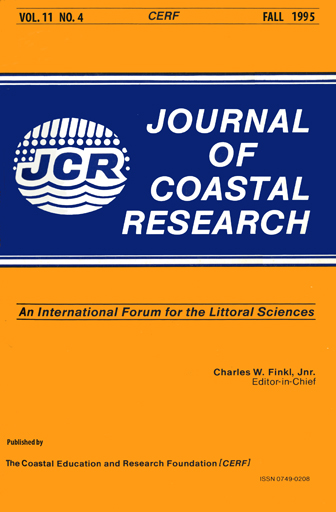Stability Shear Stress and Equilibrium Cross-Sectional Geometry of Sheltered Tidal Channels
Keywords:
Estuaries, tides, morphodynamicsAbstract
This study relates tidal channel cross-sectional area (A) to peak spring discharge (Q) via a physical mechanism, namely the stability shear stress (τS) just necessary to maintain a zero gradient in net along channel sediment transport. It is assumed that if bed shear stress (τ) is greater than τS net erosion will occur, increasing A, and reducing τ ~ (Q/A)2 back toward τS. If τ < τS there will be net deposition, reducing A and increasing τ toward τS. A survey of the literature allows estimates of Q and A at 242 sections in 26 separate sheltered tidal systems. Assuming a single value of τS characterizes the entire length of a given tidal channel, it is predicted that along-channel geometry will follow the relation AhR 1/6 ~ Q. Along-channel regressions of the form AhR 1/6 ~ Qβ give a mean observed value for β of 1.00 ± 0.06, which is consistent with this concept. Results indicate that a lower bound on τS (and an upper bound on A) for stable channels is provided by the critical shear stress τC just capable of initiating sediment motion. Observed τS is found to vary among all systems as a function of spring tidal range (Rsp) according to the relation τS ≈ 2.3 Rsp0.79 τC. Observed deviations from uniform τS along individual channels are associated with along-channel variation in the direction of maximum discharge (i.e., flood- versus ebbdominance).


